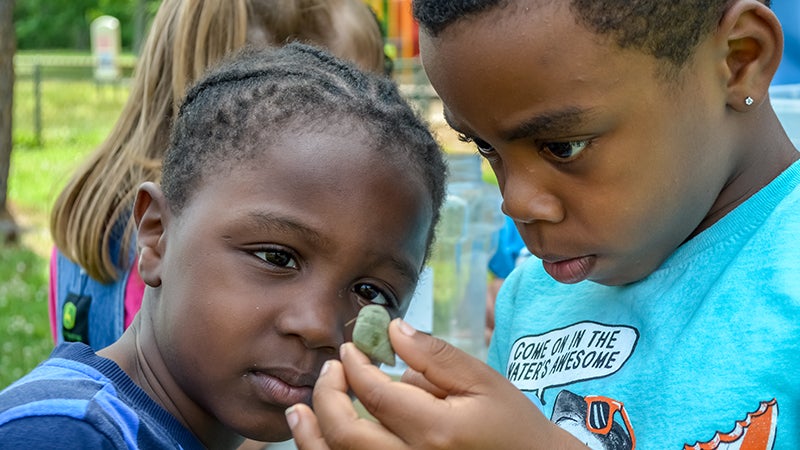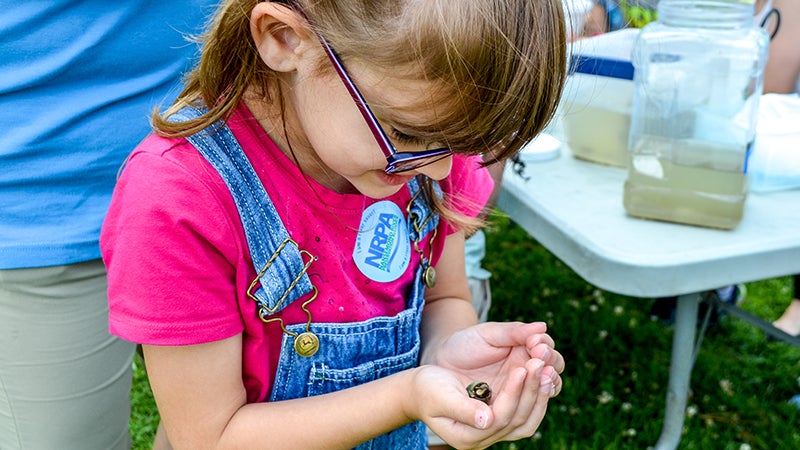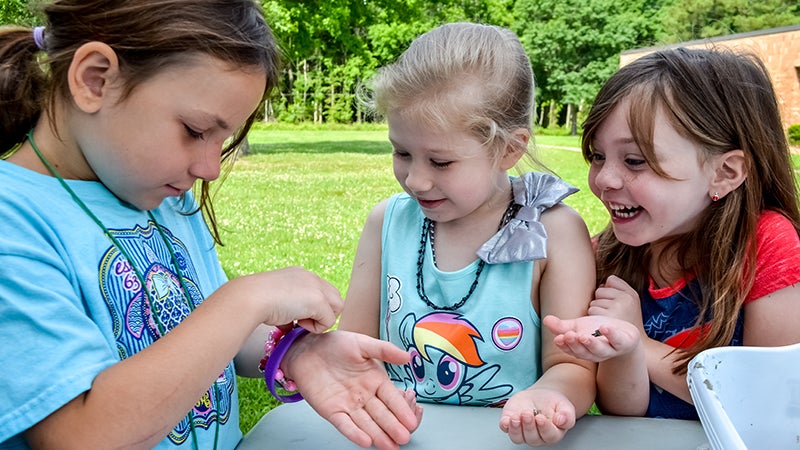Kids hold ‘friends’ from the Chesapeake Bay
Published 9:43 pm Tuesday, June 5, 2018
Sea squirts, oyster toad fish and numerous other things that live in the Chesapeake Bay watershed were brought to Nansemond Parkway Elementary School to provide roughly 70 kindergarteners firsthand experiences with life from the waterways.
Members of the Nansemond River Preservation Alliance held this environmental education program about local waterways and wildlife outside in the sunny Tuesday morning at the school’s playground.
“It’s a wonderful opportunity for the children to have an outdoor classroom experience,” NRPA President Elizabeth Taraski said.
The youngsters gathered around the menagerie that NRPA Program Manager Cindy Pinnell collected from her backyard at Hoffler Creek. The critters were housed in small plastic tubs.
They were fascinated by sea anemones that resembled palm trees, a dozen baby mud crabs and a bounty of infant oysters. Johnson and Sons Seafood in Eclipse also provided several blue crabs.
“Each time I go and pull stuff out, I get different critters,” Pinnell said. “I always get mud crabs, but this is only the second time I’ve gotten a blenny with babies.”
The feather blenny fish sat in the water inside a large oyster shell filled with thousands of her eggs. While blennies are abundant in the Chesapeake Bay, the distinctly colorful fish are solitary, secretive and hard to find, according to chesapeakebay.net.
“It’s really cool,” Amari Davis, 6, said about the blenny. “It’s got camouflage.”
Kids got to hold soft crabs and even a slippery polychaeta worm. Corelle Demiel, 5, thought the crabs were like spiders that lived in water. Isabella Kinsey, 5, liked the sticky periwinkle snails that she kept calling “twinkles.”
“This baby-baby crab feels ticklish,” said Alana Harris, 6.
It was the first time that most of the kids got to see such interesting wildlife up close.
“It’s a new experience for them to actually hold some of them,” said NRPA volunteer Mike Reiss. “They’re finding out that it’s OK to interact with nature a little bit.”
The NRPA environmental education committee began these kindergarten programs in 2016 to introduce Suffolk’s natural resources and how to best protect them.
“It’s a real-world connection to the science SOLs we teach in kindergarten, and they can see that big connection between littering and the cleanliness of all the waters,” said kindergarten teacher Bridget Dennis.
This year’s program included Jamie Durden, an environmental engineering technician with the city of Suffolk, and her interactive demonstration of how water runoff carries harmful substances from the streets and lawns into the waterways.
“It teaches kids about the watershed and how to protect it,” Durden said.
Taraski showed the children pictures of pelicans, geese, osprey, muskrats, fish and some other “friends” they have locally that they need to help protect. Each of the kids got a sticker with the tagline, “I’m a river savior!”
If all goes well, these kindergarteners will grow up to help save the Chesapeake Bay.
“Maybe 20 years from now, we won’t have to have ‘Clean the Bay Days’ anymore,” Taraski said.








